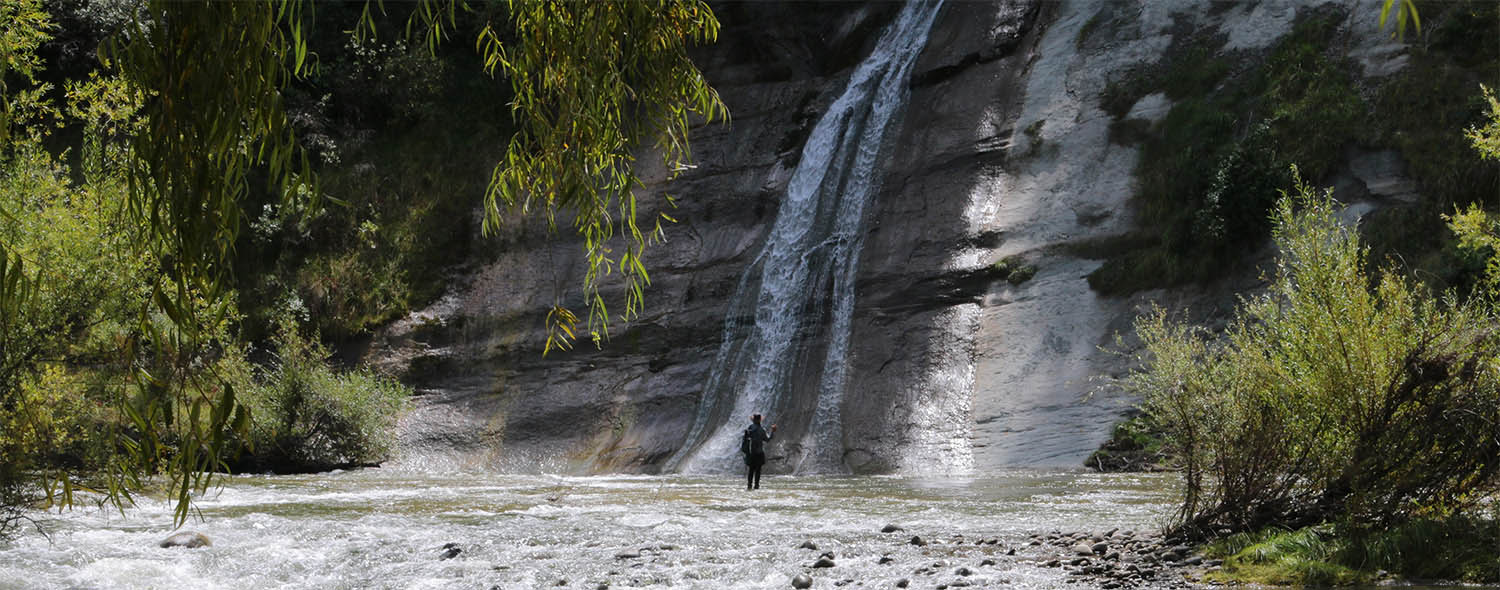The advantages of Spey casting, in addition to the challenge and incredible fun, are:
the ability to cast when there is no back room,
less time spent false casting and more time fishing,
efficiency searching large bodies of water,
and the ability to cast larger flies and heavier tips than possible with a conventional fly line on the same rod.
I am also more relaxed and better able to tune into my surroundings when my eyes are not glued to an indicator or dry fly.
And the hits are hard to beat.
Trout Spey is most suited to rivers and streams with reasonable numbers of fish. In New Zealand this generally means the middle and lower reaches, as well as estuaries. Crystal clear sparsely populated headwaters are best tackled by overhead casting to sighted fish, using ultra long leaders and extreme stealth.
Effective Trout Spey techniques include swinging soft hackles and/or dry flies during hatches, and fishing streamers, either stripped or on the swing. In fact, fishing streamers during a hatch will often catch larger better conditioned fish than soft hackles. Fishing streamers is also a highly effective method on rivers that are swollen and discoloured.
Most New Zealand rivers are not wide by international standards, but they often have relatively steep gradients and therefore a lot of power for their size. This means that 9-10 ft sink tips with sink rates of at least 6 inches per second are frequently necessary for small to medium rivers, and sink rates of 7-9 ips are often required on large rivers.
Nine and nine-and-a-half foot 5 wt single hand rods with 150 and 180-200 grain Skagit heads are extremely versatile Trout Spey tools for small to medium rivers. Not only will they cast tips long and heavy enough for effective streamer fishing, but they are also capable of acceptable presentation with soft hackles using intermediate Polyleaders, as long as one taps off on the power. A hybrid head is great for swinging dry flies during the evening caddis hatch, and would be the head of choice for hard core soft hackle fishing.
An 11 - 11.5 ft 4wt double-handed rod is a highly effective tool for large rivers as it makes easy work of 300 grain Skagit heads and 10 ft heavy tips, and the additional length is a distinct advantage when mending and managing line on bigger water. A Hybrid head on a 4wt double-hander is perfect for presentation work in low summer flows and casting streamer patterns to surface action in estuaries. At 300+ grains, Hybrid heads are capable of casting tips heavy enough for most trout streamers.
For more on selecting running lines, reels and Skagit heads, as well as sink tips that produce the best from your Skagit head of choice, check out my article, ‘Single Hand Skagit: Science behind the magic’. Although focussed on single hand rods, I find many of the conclusions and formulae apply equally to double handed rods. My review of the Sage Trout Spey HD 4wt provides more information on fine-tuning double handers for trout in New Zealand.
Upcoming single-hand Trout Spey articles will cover how to put together a cost effective 9ft 5 wt outfit, and whether you should add a floating tip to a Skagit head or purchase an ultra-compact Scandi head for fishing soft hackles and nymphs and swinging dry flies. Subscribe to receive emails when new content becomes available.
Single hand Trout Spey : Getting started with a 9 ft 5wt rod |
|
| + | Intro |
| + | Head design |
| + | Sink tips |
| + | Casting heavy sink tips |
| + | Running lines |
| + | Reels |
| + | Rods |
| + | Intermediate heads |
| + | Favourite outfits |
| + | Conclusions |
Single Hand Skagit - Science behind the magic |
|
| + | Where it all began |
| + | Head design |
| + | Sink tips |
| + | Casting heavy sink tips |
| + | Running lines |
| + | Reels |
| + | Rods |
| + | Intermediate heads |
| + | Favourite outfits |
| + | Conclusions |
Single hand Trout Spey : Getting started with a 9 ft 5wt rod |
|
| + | Getting started |
| + | Rods and Skagit heads |
| + | Sink tips for Skagit heads |
| + | Tippet for Skagit heads |
| + | |
| + | Hybrid heads |
| + | Floating tips for Skagit heads |
| + | Running lines |
| + | Cost effective approach |
| + | Learning to Spey cast |
| + | A final word |
